Our own @bezotes and Rebelde photog Rebecca Beard had a chance to catch up with Tato Laviera, whose musical King of Cans premiered on July 15 at New York's Red Carpet Theater and will also play on July 22 and July 29. For tickets, contact serycolon@aol.com.
Tato Laviera stands up from his seat, backstage at Symphony Space, with the help of a beautiful woman in a red dress. She patiently tells him what lies ahead; he asks another woman if he can place his hand on her shoulder. They walk into the bright light onstage, and together, the two women guide Mr. Laviera to his seat in the middle of the stage, flanked by Arturo O’ Farrill and The Afro Latin Jazz Orchestra and Mr. Laviera’s personally-selected backup singers. Although legally blind, he has a keen awareness of his audience and his own presence. Mr. Laviera’s performance, blending poetry and his original Guaracha composed with Bill Ware, is the highlight of the evening. Mr. Laviera dedicates this poem/song to the memory of Celia Cruz, the AfroCuban icon with whom Mr. Laviera felt a kinship because of her artistry, exile and survival skills.
Again, there is blinding light and Tato is in the center, but this time, he is comfortably seated in his new digs at The Taíno Towers in Spanish Harlem. The large windows in the living room let in enough light to make of his living room a tropical island in the middle of the city. After a serious illness and search for a new home in 2010, Mr. Laviera has adapted to a new community and to new methods of writing. This is a process he explored in his first published work in the 1960s in which he explored physical and linguistic hybridization and migrations: La carreta made a u-turn.
He writes everyday, but since losing his sight, he has had to think everything out and be prepared to speak it all when a typist comes in.
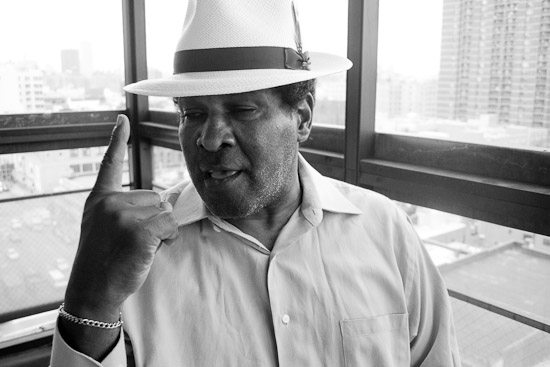

All Photos of Tato Laviera, Copyright: Rebecca Beard, http://RebeccaBeard.com
To speak to Tato Laviera is to observe a lifelong performance in which he has attempted to reconcile the two cultures which have most influenced his work — that of Puerto Rico, his country of origin and the Lower East Side, the adopted country. He speaks in Spanish and English and Spanglish while telling stories of life here and there.
Speaking of his childhood in Puerto Rico, Laviera begins with his first beating at the hands of his mother, sister, brother and father.
“My first paliza was given to be by my mother, sister, father and brother because I escaped from the house to go to the hotel in San Juan that was denying Rafael Cortijo the right to play on a Saturday night. It was in the 1950s — my brothers and sisters were going to the demonstration. I wanted to go too. I got lost and I was crying.”
Tato Laviera’s father was a serious character; he was an engineer, a nationalist and disciplinarian. And he carried a gun. He was amused by his son’s independence.
“For believing in justice. . . I got my first paliza. I was five. Decían que era ‘un negrito inteligente’”
His involvement with the church in Puerto Rico made his transition to the mainland easier.
“In the church, they liked the way I recited Latin. I was an altar boy for the bishop in San Juan and he wrote a letter I took to New York, so I was serving mass the second week in NYC. I didn’t speak English, but I had a position of importance.”
Tato Laviera does not speak of a deprived childhood, but one in which he was encouraged to pursue his interests and the biggest difficulty involved dealing with bullies in New York City. But like many Puerto Ricans, he learned to use hardship to better himself. He became a great dancer in order to get respect in the community and female attention; he won the first Latin Dance competition in Manhattan.
He lived in four places without his parents but enjoyed the experience because he was ‘left in good company.’ His father was a philosopher and his mother a writer. She wrote letters to her sisters in meticulous handwriting, highly-structured language, and there were hidden messages — secrets kept between sisters. All her letters were lost in the 1960s.
The transition from Puerto Rico to New York City came with some warnings.
Laviera moved to Bedford Stuyvesant in Brooklyn and his aunt greeted him with the words:
No te juntes con los negros.
And he didn’t quite understand because he was Black as well. But it was a matter of culture and language, not race.
The Black and Hispanic kids in the neighborhood beat him up, and Laviera learned to leave the building running. The bullies would chase him to Ave C.
“Sometimes, they were smart enough to wait for me on Ave C and beat my ass up. I was saved by a negrito named Mongue..”
Mongue, a kid Laviera believed to be African-American, was actually Puerto Rican or in Laviera’s words “the first Nuyorican I ever met.”
He didn’t know Mongue spoke Spanish until he sang El negro bembón on Avenue D in perfect Spanish.
Life in the Lower East Side was different but he made some connections with the island through music and language.
“In the Lower East Side, the Puerto Ricans had already been ‘project-ed.’ The people were used to living in the projects. They worked on ships on South Street or in hotels.
There were a lot of people collecting records, so music became a really important connection between New York City and Puerto Rico. We spoke English in the street and Spanish at home. A lot of music from Puerto Rico was played in the streets and in people’s homes. We listened to Bomba, Plena, pop music and Salsa.”
Music was as big a literary influence as the written word.
One of Laviera’s biggest literary influences is Luis Palés Matos.
Laviera’s uncle took the nine-year-old to Parada 21 in Santurce to a literary event at which Luis Palés Matos recited poetry. Inspired by Matos, Laviera began to listen to popular songs and change the lyrics, using the music as inspiration for his own words and internal rhythms.
In regards to recitation style, Jorge Brandon, who has been called the father of the Nuyorican movement, was an early influence as well.
“My play The King of Cans is written in highly stylized Nuyorican English with some literary considerations. The moment of inspiration defines the language… of 220 poems, fifty percent are in English, twenty-five percent in Spanish and the rest are bilingual or Spanglish.”
The King of Cans is a musical which takes place in New York City and tells the story of homeless can collectors who strive to rebuild their lives while dealing with day-to-day survival on the streets.
Laviera feels linguistic invention is a big part of the artistic process and one he claims with pride:
“Puerto Rico in particular intertwines Caribbean Black Spanish. We dare to claim it. It is a source of pride and we are not linguistically crippled. My claim to fame is I can experiment, and sound intelligent with my linguistic experiments.”
Tato Laviera alternates between producing a book of poems and a play. King of Cans is Laviera’s 16th play and he finds the characters through poetry. His creative process requires he write poems as a framework for larger work and the deeper exploration of a character.
He considers the most exciting part of being an artist to be the completion of a goal. He feels an urgency to compete one work and dive right into another project. As his play gets closer to its performance dates in July, he looks forward to returning to the novel.
“Art . . . la brega. It’s never easy. You have to be married to it — sustain its wounds and criticisms. And the people with no vision and technical skills and vice versa. And some who are not satisfied with anything — critics.”
Tato Laviera has a catalog of 45 songs for plays and King of Cans has seven new songs.
He says the play is really a musical and something he’s always meant to do — write more and more musicals. The show with Arturo O’Farrill and The Afro-Latin Jazz Orchestra was a graduation of sorts for Laviera. And he hopes to do the performance again.
“I write music with my mouth — first lyrics, then song, then rhythm.”
After the play, he will return to his novel entitled Spanish Harlem, which has five parts and he has already completed four. The eight hundred pages of Spanish Harlem await his return and full focus. But, right now, the play is the thing and handling the vagaries of a theatrical production in which he is fully engaged.
Tato Laviera is alive and well and making art and quite settled in Spanish Harlem even as he speaks of the ‘interminable Puerto Rican migration.’ He believes himself to be a child of Puerto Rico, the Lower East Side and Spanish Harlem. And he is not one prone to self-pity or sadness, because as he states several times during the interview, “I am in love with the moment. It is the moment …right now that counts.”




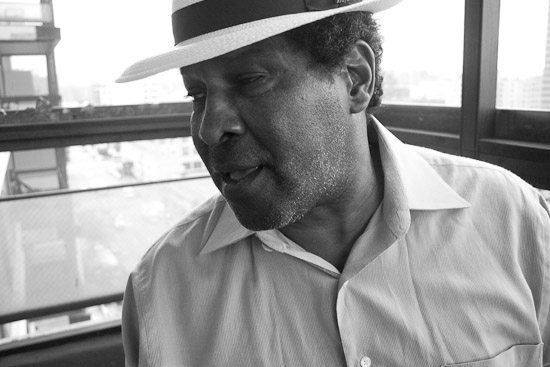
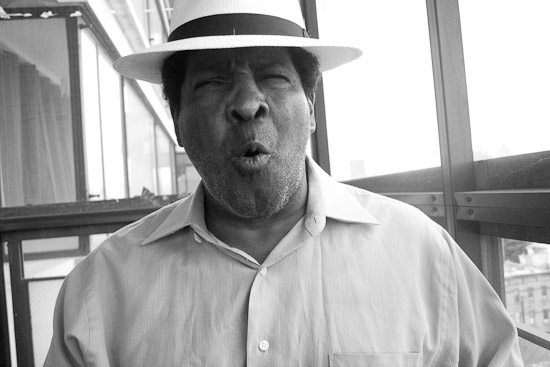
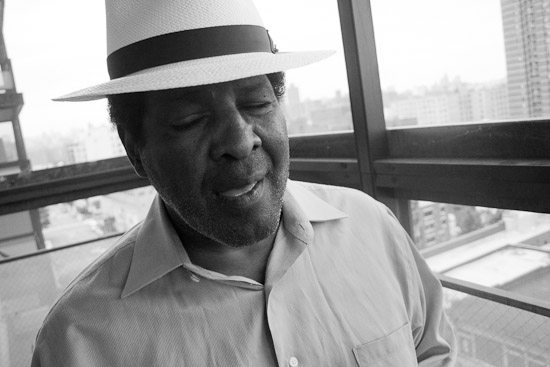
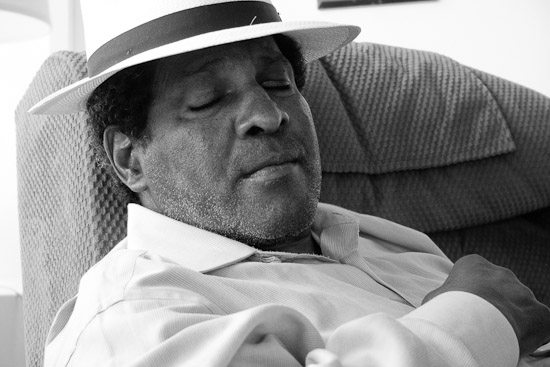
[…] Nuyorican aesthetic are Louis Reyes Rivera (1945 – 2012), Jesús Papoleto Meléndez (1950), Tato Laviera (1951), and Edwin Torres (1958). They continue to inspire the new generations of Latino […]
[…] musician, and dramatist Abraham “Tato” Laviera, one of the greatest representatives of the Nuyorican movement, died on November 1 (Día de los […]
[…] musician, and dramatist Abraham “Tato” Laviera, one of the greatest representatives of the Nuyorican movement, died on November 1 (Día de los […]
[…] Laviera left community organizing to become a full-time poet in the 1970s. (He told the website Latino Rebels that he wanted to be a poet once he saw Luis Palés Matos recite in Puerto Rico in the late 1950s.) […]
[…] Laviera left community organizing to become a full-time poet in the 1970s. (He told the website Latino Rebels that he wanted to be a poet once he saw Luis Palés Matos recite in Puerto Rico in the late 1950s.) […]
[…] Laviera left community organizing to become a full-time poet in the 1970s. (He told the website Latino Rebels that he wanted to be a poet once he saw Luis Palés Matos recite in Puerto Rico in the late 1950s.) […]